
Erythronium : growing and care
Contents
Erythroniums in a nutshell
- Erythroniums offer an elegant flowering from the beginning of spring!
- We appreciate their delicate pink, white, or yellow flowers, which resemble small lilies.
- They fear drought. Plant them in rich, cool, and shaded soil!
- They are perfect for woodland gardens.
- Once established, Erythroniums require very little maintenance.
A word from our Expert
Erythronium is a lovely bulbous perennial that heralds the return of spring! It captivates us with its elegant flowering, which can sometimes appear as early as the end of winter, resembling small lily flowers. Also known as dog’s tooth due to the shape of its bulb, the Erythronium dens-canis is a plant that can be found spontaneously in France… Discover the varieties ‘Pagoda’ with yellow flowers and ‘White Beauty’ with white flowers! It is a superb bulb, unfortunately too rare in cultivation. Once flowering is over, Erythronium enters dormancy and becomes forgotten, making way for other plants… And every year, in spring, it’s the same spectacle! It unfurls its small luminous flowers, drooping towards the ground, which immediately bring a lot of brightness to the beds. They possess this rare elegance, a simple and graceful quality, humble and unadorned… And are perfect for accompanying other delicate spring bulbs: Crocus, ipheions, or muscaris.
Erythroniums are woodland plants that thrive in cool, humus-rich, and shaded soils. Their main enemy: drought! They also do not appreciate winter moisture. They are fairly easy to cultivate and are rarely targeted by diseases or pests, apart from a few slugs that may nibble on the foliage. Maintenance is very limited: one simply needs to mulch to retain moisture in the soil and water in case of drought. When conditions are right, erythronium can even naturalise… A plant to adopt urgently!
Botany
Botanical data
- Latin name Erythronium sp.
- Family Liliaceae
- Common name Erythron, Dog's tooth, Red satyrion
- Flowering spring (March to June)
- Height 20 to 40 centimetres
- Exposure partial shade
- Soil type cool and drained
- Hardiness very good (around -30 °C)
The Erythroniums are perennial bulbous plants that include nearly thirty species. They are primarily found in North America, but there are also a few Asian and European species. Erythronium dens-canis grows spontaneously in the southern half of France, especially in mountainous regions: in the southern Alps, but also in the Massif Central and the Pyrenees. It can be found in deciduous forests and at the edges of undergrowth, as well as in limestone short grass meadows and heaths. It is protected in certain departments.
The genus name Erythronium comes from the ancient Greek erythros, meaning red. Dens-canis refers to the bulb’s appearance, which resembles a dog’s canine.
The Erythronium belongs to the large family of Liliaceae, which includes over 400 species of herbaceous plants, often bulbous. They generally spend the winter underground thanks to a subterranean storage organ, a bulb or sometimes a rootstock. This family includes many cultivated plants such as Lilies, of course, but also tulips, daffodils, and muscaris. The flowers of erythroniums somewhat resemble those of Lilies.
The Erythroniums form a tuft of leaves at ground level, from which a long floral stem rises. They often measure around 20 centimetres in height but can reach up to 40 – 50 centimetres tall. Erythronium dens-canis is one of the smallest, with only about fifteen centimetres in height.
The Erythroniums bloom from the beginning of spring, starting in March and continuing until June, depending on the species. They take time to establish and may need a few years before flowering.
In spring, the Erythronium produces multiple floral stems that rise above the tuft of leaves. The flowers are attached to the ends of these long reddish peduncles, and they droop towards the ground. The Erythronium dens-canis has pink flowers, but there are varieties with yellow blooms (Erythronium ‘Pagoda’) or white (Erythronium ‘White Beauty’). They remind us of small lily flowers (not surprising, since they belong to the same family!). They are appreciated for their simple yet elegant appearance! They can measure up to 7 centimetres in diameter for varieties like ‘White Beauty’. Those of Erythronium dens-canis are smaller (about 4 cm). They consist of three petals and three elongated sepals, which have the same appearance (these are then referred to as tepals). They are beautifully reflexed backwards, revealing six stamens at the centre of the flower, whose anthers (the part that carries the pollen) have lovely purple, white, or yellow colours.
The Erythronium has large leaves, elongated and broad, measuring up to 30 – 40 centimetres in length. They are a deep, glossy green, often with stunning brown, bronze, or purple marbling, more pronounced at the beginning of the season when the leaves are still young. They take on beautiful colour nuances! This is an original foliage, especially that of Erythronium dens-canis, which has very pronounced marbling. The leaves are basal and all emerge from a tuft at ground level. They disappear after flowering.
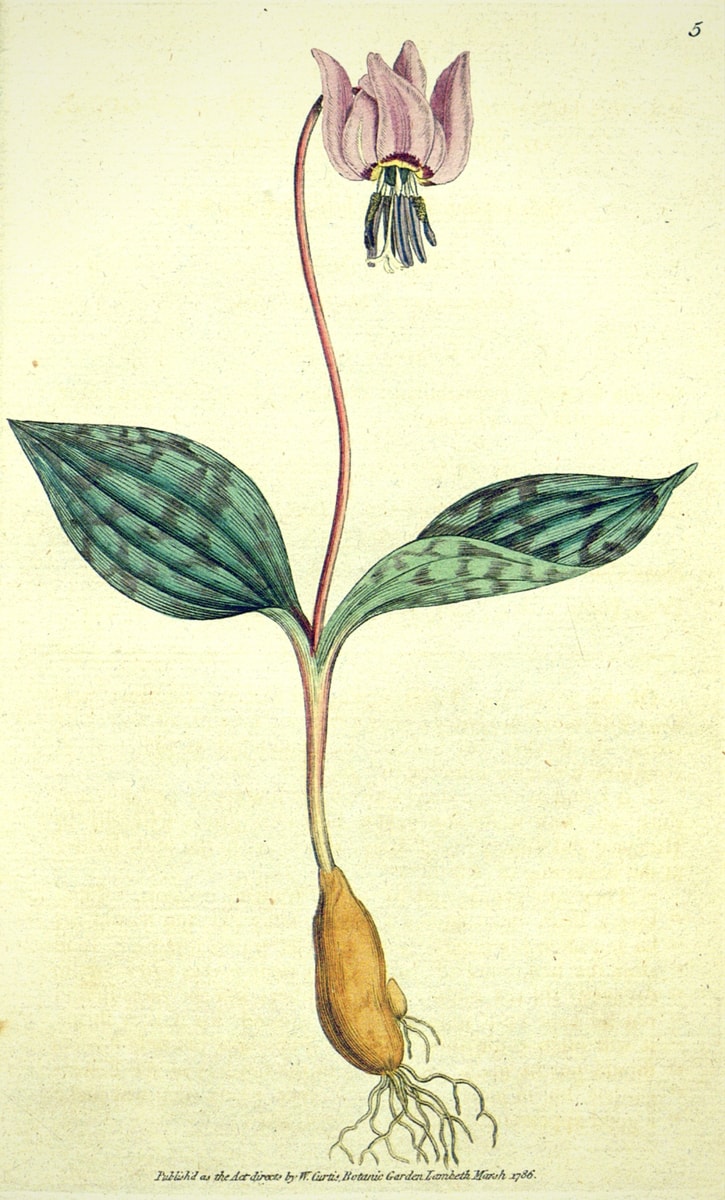
Erythronium dens-canis: Botanical plate
The bulb of the Erythronium is white, elongated, and ends in a curved tip. It has the shape of a dog’s canine, which gives it its species name: dens-canis. It forms bulbil, small bulbs that develop on the sides of the main bulb, allowing the plant to reproduce by division.
After flowering, the Erythronium produces fruits that are shaped like swollen capsules with three chambers. They contain seeds with elaiosomes, small outgrowths that attract ants: these will take care of dispersing and burying the seeds!
Once flowering is over, the foliage of the Erythronium dries up and the plant disappears in summer, only to reappear in spring. It becomes forgotten and makes way for other plants. However, even during dormancy, the substrate must not dry out, as the bulb is fragile and needs to remain cool.
The main varieties of Erythronium

Erythronium dens-canis
- Flowering time April, May
- Height at maturity 12 cm

Erythronium tuolumnense Pagoda
- Flowering time April, May
- Height at maturity 20 cm

Erythronium White Beauty
- Flowering time April, May
- Height at maturity 20 cm
Discover other Erythronium
View all →Available in 1 sizes
Available in 1 sizes
Available in 0 sizes
Available in 2 sizes
Available in 1 sizes
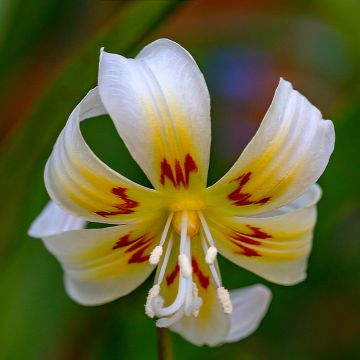
Available in 1 sizes
Available in 1 sizes
Available in 1 sizes
Planting
Where to plant Erythronium?
We advise you to choose their location carefully as, once established, erythroniums do not like to be moved. Ideally, you should recreate growing conditions similar to those found in a deciduous forest, to provide them with a situation comparable to their natural habitat.
The best exposure for erythroniums is partial shade, although they can also tolerate sun as long as the soil remains cool. Since they naturally grow in woodlands, they will appreciate being planted under light shade, particularly beneath deciduous trees. The plant can start its growing cycle and benefit from the light in early spring, before the tree has all its leaves, but it will be protected from full sun in summer.
Erythronium prefers cool, light soils rich in humus (like forest soil). It cannot tolerate drought, even when in dormancy… The bulb must never dry out! However, it does not like excess moisture in winter, which can cause the bulb to rot. Therefore, if your soil tends to retain water, you should add a layer of gravel when planting. Feel free to enrich the soil with compost to provide organic matter. Although erythronium is not very sensitive to soil pH, it seems to prefer slightly acidic soils.
When to plant?
Plant erythroniums in autumn, ideally in September or October. Later planting is possible but not recommended: the bulbs tend to establish less well. Do not store the bulbs, but plant them immediately after purchase, this is important! Storage is tricky as they must not dry out… nor rot.
How to plant Erythronium?
The bulb should be buried 10 to 15 centimetres deep. If your soil is heavy and clayey, add gravel to prevent water from stagnating and causing the bulb to rot. We recommend enriching the soil with compost. Plant them in groups, with at least five or seven bulbs, maintaining a distance of about ten centimetres between each bulb.
- Work the soil to loosen it with a spade. Erythronium appreciates soils rich in organic matter: we recommend adding compost or leaf mould.
- Dig a planting hole. You can add some gravel for drainage, especially if your soil is heavy.
- Plant the bulb about ten centimetres deep, placing the swollen, rounded part where the roots develop downwards.
- Cover with soil and firm down.
We recommend placing a small stake next to the bulb to remember its location and avoid accidentally hitting it with a spade when working the bed before the vegetation starts in spring.
You can also grow your erythroniums in pots. Place a layer of gravel or pumice at the bottom for drainage. Fill it with potting soil, plant, and cover with substrate, then water. In pots, you will need to monitor watering as the substrate dries out faster than in the ground.
→ Learn more in our advice sheet: Growing Erythronium in pots.
Care
Erythronium is a plant that requires very little maintenance! Water during summer in dry weather, as the bulb needs to stay cool. We suggest mulching with a layer of fallen leaves or ramial chipped wood to maintain moisture, especially during summer. Conversely, a soil that remains wet in winter risks rotting the bulb, which is why we recommend improving drainage.
You can remove the flowers when they are faded to prevent seed formation, which would unnecessarily exhaust the plant. However, wait until the leaves are dry before cutting them and cleaning the clump.
It is very rare for erythronium to be affected by diseases, but beware of slugs! You can protect your plants by using slug pellets or by placing wood chips all around to create a barrier. The main cultivation problems arise from poorly drained soil, which causes the bulb to rot, or from summer drought.
Propagating
To multiply Erythroniums, you need to be patient! You can either sow them or divide the bulbs, but these are delicate techniques that take time. You will have to wait a few years before seeing the young Erythroniums flower. We recommend multiplying them by dividing bulbs rather than by sowing.
Bulb Division
When the clumps become dense, after three or four years, you can divide them. Do this once flowering is finished, in early summer, after the foliage has dried and the plant has entered dormancy.
- Choose a well-established and fairly dense clump. Dig it up and possibly remove any excess soil around the bulb.
- Gently separate the bulbils around the main bulb.
- Replant them immediately (as the bulbs must not dry out!), at a depth of about ten centimetres, in previously worked soil.
Sowing
If you wish to attempt sowing Erythronium, do so at the end of summer. Reserve this method of multiplication for botanical species, such as Erythronium dens-canis, rather than horticultural varieties. Sowing is delicate: depending on the species, the conditions necessary for germination vary. Some require a period of warmth followed by cold (especially for species that naturally grow at altitude). Additionally, from sowing, some (like Erythronium revolutum) take 7 to 10 years before offering their first flowering!
Start by preparing a pot by filling it with potting soil. Sow the seeds, scattered to avoid the need for pricking out in the first year, then cover them with a few millimetres of substrate. Water. Place the pot outdoors, in a cool location, as germination is favoured by the cold of winter. You will have to wait at least three years before seeing them flower!
Associating
Erythronium integrates perfectly into mixed borders in partial shade, in association with perennials or other bulbous plants. Its small elegant flowers will bring a light and original touch to your flowerbed. It is an ideal plant to accompany other spring bulbs: fritillaries (notably Fritillaria meleagris), tulips, crocus… You can plant them in patches in a short grass meadow, in an area left quite wild, giving your garden a flower-filled meadow feel. Don’t hesitate to plant Erythronium ‘Pagoda’ alongside muscaris and tulips: it will bring brightness and contrast with the slightly darker hue of the muscaris, while the tulips will add vibrant splashes of colour!

Erythronium ‘Pagoda’ with muscaris and tulips: a superb combination of yellow, blue/purple, and red (photo Steven Bemelman – iBulb)
Erythroniums thrive in light shade and easily fit into the composition of a woodland garden! Create a wild and natural garden that requires little maintenance. Place them alongside other plants that enjoy shade and coolness: enjoy the decorative foliage of ferns, Brunnera macrophylla, and hostas! Add colour with the delicate blooms of epimediums and bleeding hearts, and originality with Arisaemas. Cover the ground with a tapetum of wood anemones (Anemone nemorosa), bluebells, or trilliums. You will achieve a cool and slightly shaded garden, where the erythroniums will find ideal conditions and may even naturalise!
Erythroniums also adapt well to pot or container cultivation, provided you monitor watering: the substrate should remain cool in summer. Pair them with small spring bulbs: muscaris, ipheions, or Greek anemones (Anemone blanda), or with pansies.
Finally, erythroniums can grow in a shaded and cool rockery. Plant them alongside some clumps of ferns (for example, maidenhair ferns) and grasses (such as Luzula sylvatica), arisaemas, violets, and snowdrops. Also enjoy the delicate blue flowering of Siberian squill (Scilla siberica)!
→ Discover 5 more beautiful association ideas with Erythronium in our advice sheet!
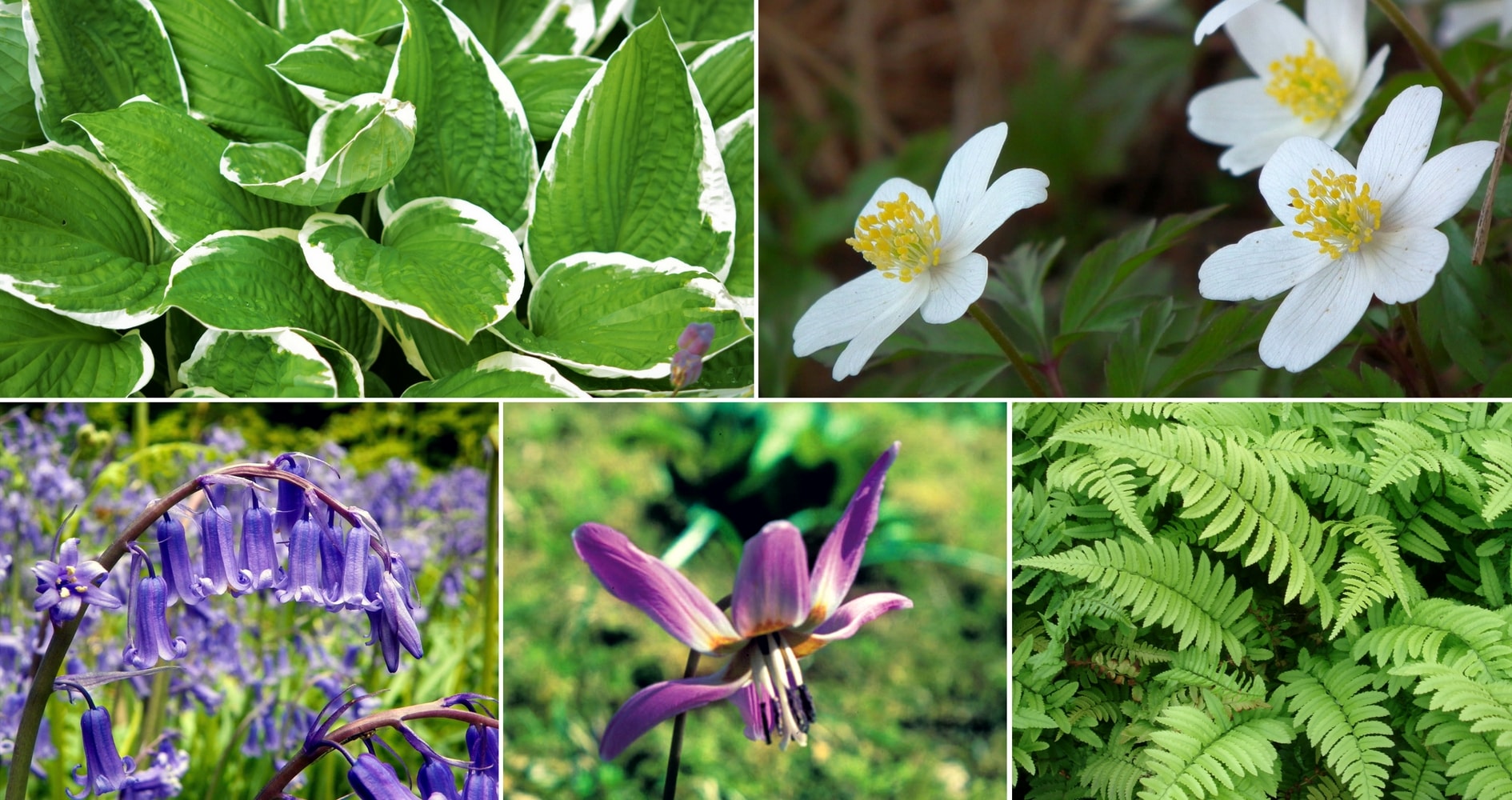
An association for a woodland atmosphere: Hosta, Anemone nemorosa, Bluebell (Hyacinthoides non-scripta), Erythronium dens-canis, and Dryopteris cycadina.
Did you know?
- An edible plant!
In the past, bulbs were consumed in Japan, transformed into a powder used as a binding agent called katakuriko, which was used to prepare tempura. The leaves can also be consumed as a vegetable after cooking.
- A protected plant
Naturally occurring in France, Erythronium dens-canis is a plant that remains quite rare in the wild, which is why it is protected in Aquitaine and Franche-Comté. If you find it, avoid uprooting it!
- A collaboration with ants!
The seeds of Erythronium bear elaiosomes: small outgrowths that attract ants. They will come to collect the seeds and take them back to the anthill, where the elaiosomes will help feed the larvae. In return, the seed will find itself in a favourable culture medium. The plant uses ants to disperse and sow the seeds in a particularly rich substrate!
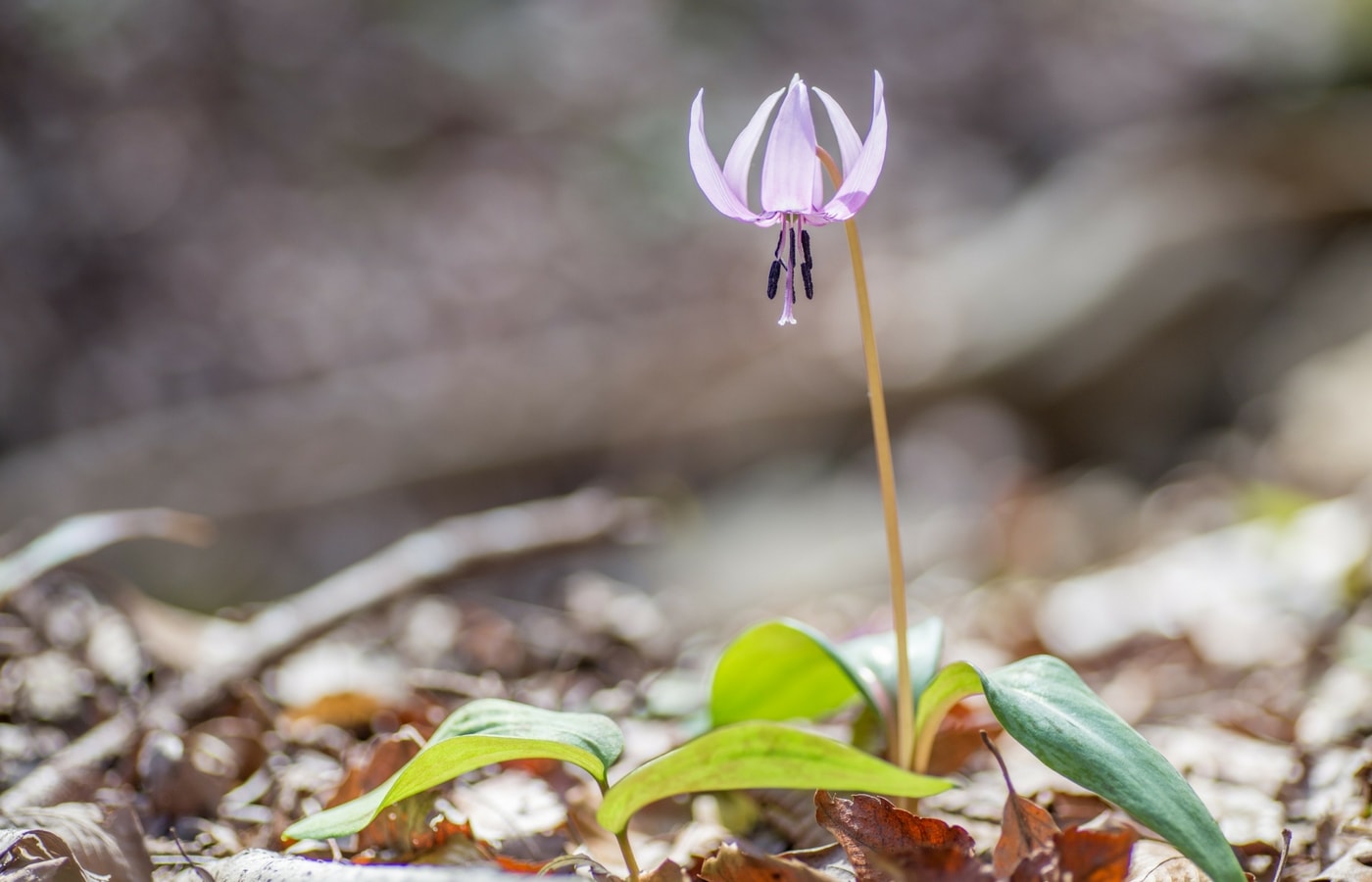
Useful resources
- Discover our range of erythroniums!
Frequently asked questions
-
Should I remove the bulbs to store them over winter?
No, Erythronium is a very hardy plant, which is why it can easily withstand staying in the ground over winter. If you do happen to lift the bulbs, they should be kept in a bag or pot filled with very slightly damp compost to keep them cool, without allowing them to rot... These bulbs do not tolerate drying out! Therefore, the simplest option is to leave them in the ground.
-
The flowering is over, can I cut the foliage?
No, it is important to let the leaves dry. The plant replenishes its reserves: it needs them to provide a beautiful flowering the following year. The foliage will naturally wither in summer and the plant will enter dormancy, only to reappear in spring... Wait until the foliage is completely dry before cleaning the clump.
-
My Erythronium isn't shooting. What should I do?
If you planted it in autumn and it does not shoot in spring, it is possible that the bulb has rotted if your soil retains moisture. You need to work on the drainage during planting, even if it means installing the Erythronium on a slight mound to facilitate water runoff. Before planting, you should also ensure that the bulb has not dried out... It does not tolerate drought! If your erythronium comes from a sowing, you need to be patient. Germination is delicate and takes time.
-
My erythronium bulbs are rotting. Can I plant them?
Erythronium bulbs do not tolerate being left out of the ground for long: in dry medium, they dry out quickly. In humid medium, they develop a layer of mould within a few days, which eventually attacks the bulb deeply and causes it to rot. If your bulbs show signs of mould, wipe them with a cloth and plant them quickly. If the mould has reached the inside of the bulb (indicated by a soft bulb), it is too late, and it should be discarded. We package our bulbs in small plastic pouches with turf to limit this phenomenon. However, it may happen that some bulbs mould and escape our control before shipping: if this is the case, please let us know for a replacement or refund.
- Subscribe!
- Contents
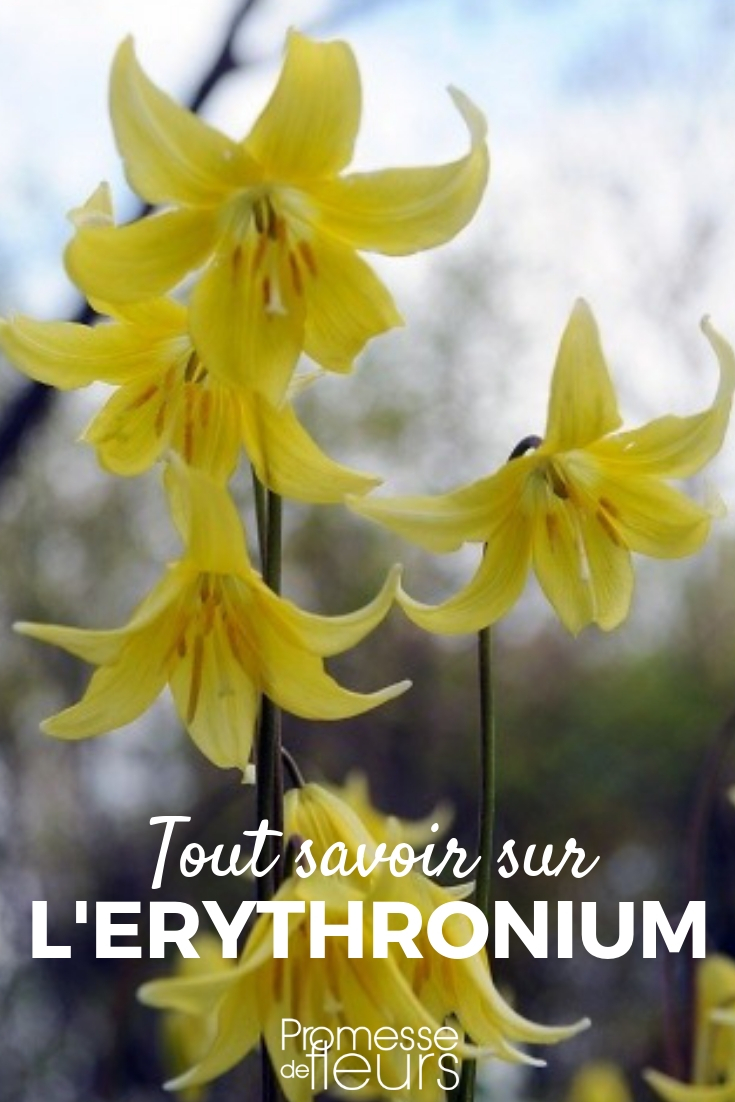































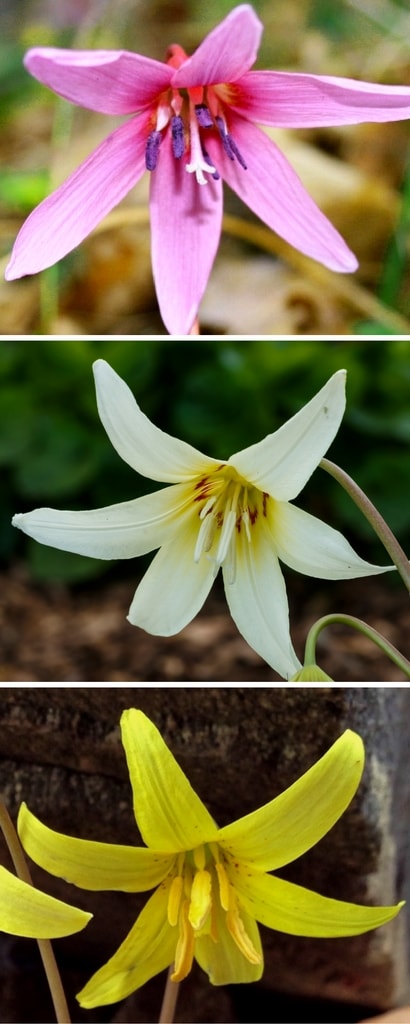

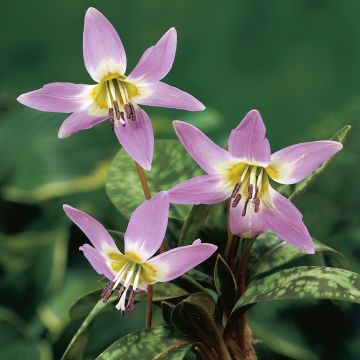
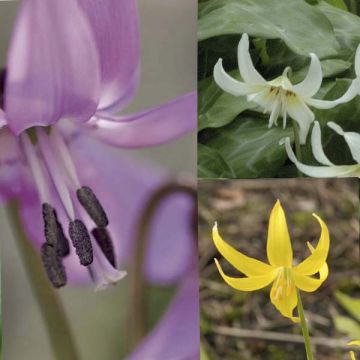

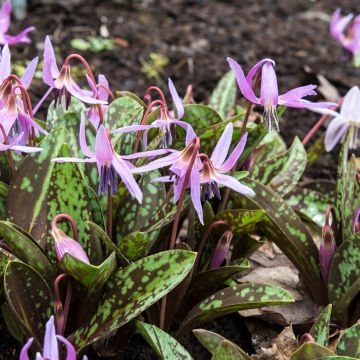
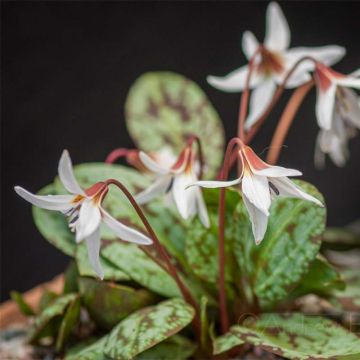

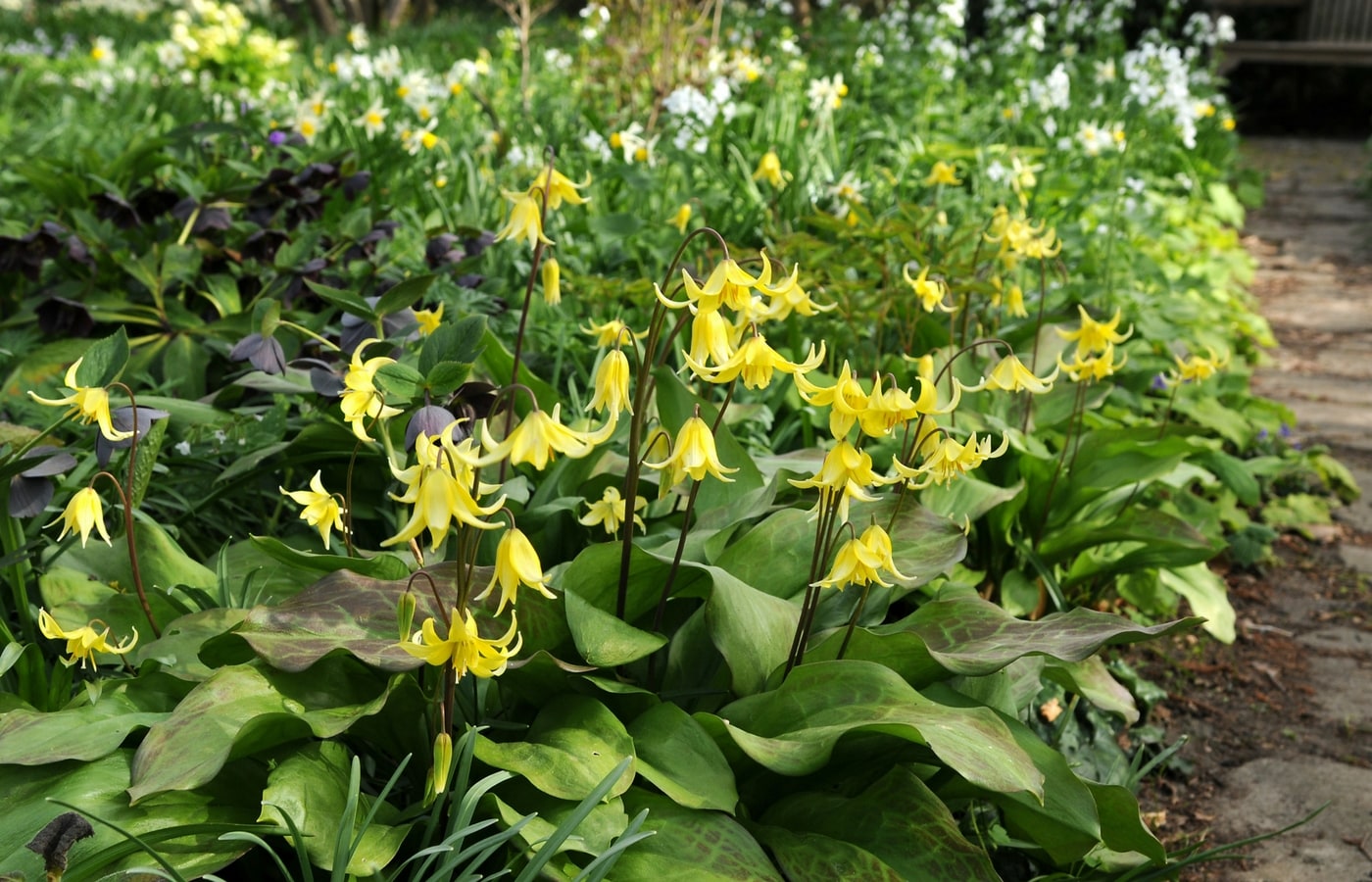
Comments